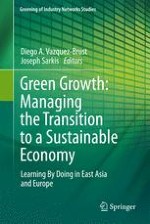2012 | OriginalPaper | Buchkapitel
5. Analysis of Technical Efficiency and Productivity Using Meta-frontier-Manufacturing Industries in Korea and China
verfasst von : Sang-Mok Kang, Moon-Hwee Kim
Erschienen in: Green Growth: Managing the Transition to a Sustainable Economy
Verlag: Springer Netherlands
Aktivieren Sie unsere intelligente Suche, um passende Fachinhalte oder Patente zu finden.
Wählen Sie Textabschnitte aus um mit Künstlicher Intelligenz passenden Patente zu finden. powered by
Markieren Sie Textabschnitte, um KI-gestützt weitere passende Inhalte zu finden. powered by
